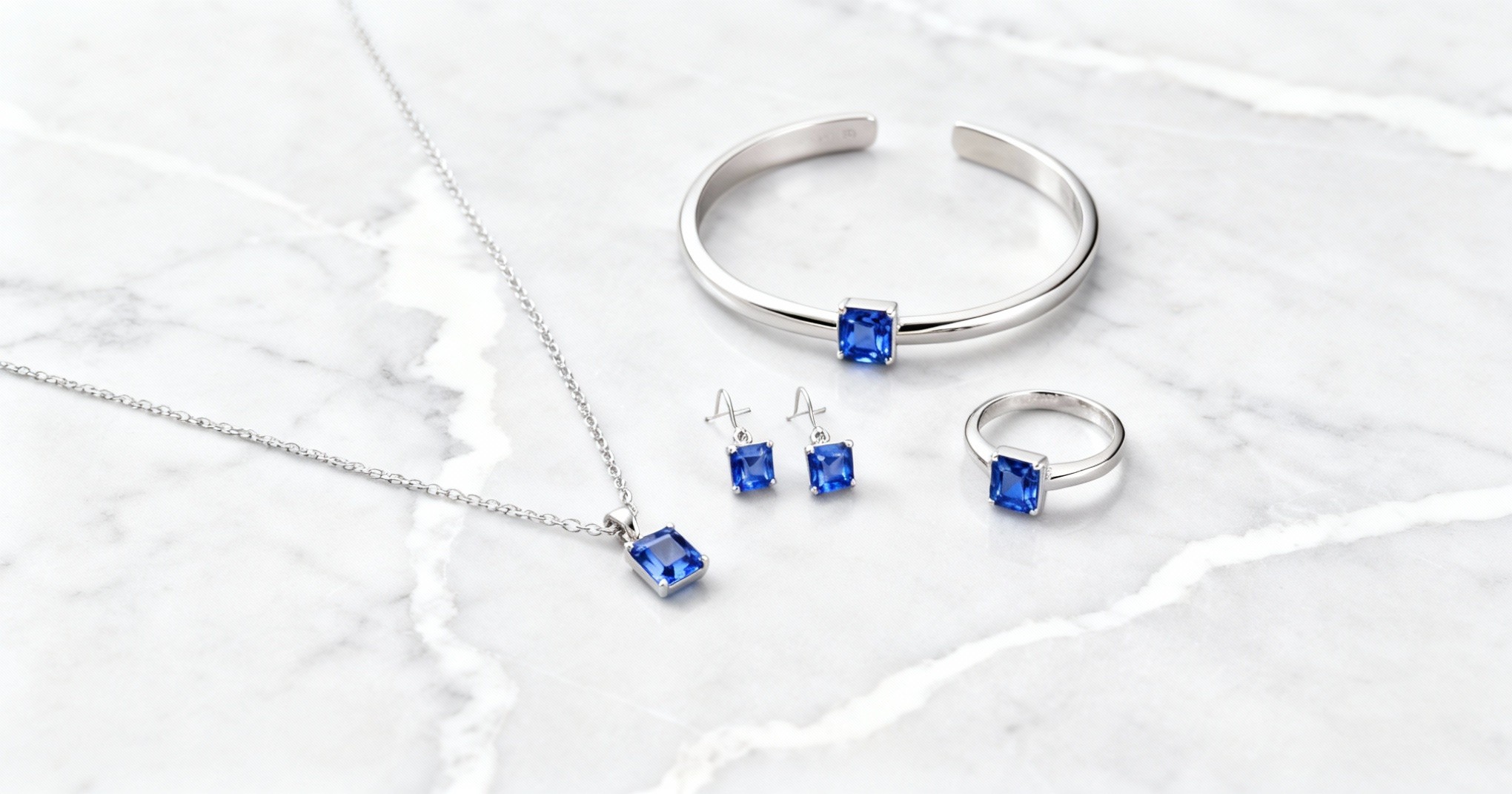🌙 What Is Sterling Silver (925)? Complete Guide to Real Silver Jewellery
For centuries, sterling silver jewellery has been cherished for its elegance, versatility, and timeless appeal. Whether you’re buying your first 925 silver piece, wondering if it’s real silver, or comparing it to gold or stainless steel, this guide will help you understand what makes sterling silver so special — and why it remains a favourite in jewellery collections worldwide.
💎 What Is Sterling Silver?
Sterling silver is a real silver alloy made of 92.5% pure silver and 7.5% copper. This combination creates the perfect balance of durability and beauty, making sterling silver ideal for everyday wear while maintaining its bright, polished appearance.
The “925” hallmark often stamped on jewellery confirms authenticity — meaning it contains 92.5% silver. Therefore, 925 silver and sterling silver are interchangeable terms.
✨ Fun Fact:
Terms like Bali Silver or Thai Silver refer to sterling silver handcrafted using traditional methods. The silver content remains 92.5%, but each region adds its own artistic touch.
💠 Is 925 Sterling Silver Real Silver?
Yes — 925 sterling silver is real silver, not just silver-colored metal.
Be cautious of terms like nickel silver or German silver, which contain no actual silver and may cause skin irritation. Always look for clear hallmarks like “925,” “Sterling,” “SS,” or “Sterling Silver”.
Avoid vague labels such as “silver tone” or “silver plated” unless you are intentionally buying plated jewellery.
🔍 How to Test If Silver Jewellery Is Real
If you’re unsure whether your piece is genuine sterling silver, try these simple tests:
🧲 Magnet Test: Silver is not magnetic. If a magnet sticks, it’s likely not sterling silver.
⚗️ Bleach Test: A small drop of bleach will darken real silver temporarily due to oxidation.
🔎 Hallmark Check: Look for stamps like 925, SS, or Sterling Silver.
For absolute certainty, consider a silver testing kit or a professional assessment from a jeweller.
🌫️ Does Sterling Silver Tarnish?
Yes — sterling silver can tarnish, but this is a natural process and not a flaw. Tarnish occurs when silver reacts with air, moisture, or chemicals, forming a thin dark layer on the surface. It can be easily polished and does not damage the metal.
🌿 Silver does not rust, as it contains no iron.
🌼 How to Prevent Tarnish
Keep your silver jewellery bright and beautiful with these tips:
Store pieces in airtight containers or anti-tarnish pouches.
Avoid direct contact with perfume, lotions, chlorine, or salt water.
Wear your jewellery regularly — The natural oils in your skin actually help keep silver shiny.
🧼 How to Clean Sterling Silver Jewellery
Even with careful storage, silver will eventually tarnish. Avoid harsh methods like toothpaste, baking soda, vinegar, or lemon juice — these can scratch the surface.
✅ Recommended Cleaning:
Soft silver polishing cloths
Professional silver cleaners
Refer to your brand’s Jewellery Care Guide for full instructions on safe and effective silver cleaning.
⚖️ Sterling Silver vs Other Metals
| Metal | Precious Metal? | Tarnish / Rust | Durability | Skin Safety | Value |
|---|---|---|---|---|---|
| 925 Sterling Silver | ✅ Yes | Tarnishes (cleanable) | Durable | Hypoallergenic | Retains value |
| Gold (14K–18K) | ✅ Yes | No | Softer | Hypoallergenic | High |
| Stainless Steel | ❌ No | May rust | Very strong | Usually safe | Low |
| Silver-Plated | ⚠️ Thin layer | Wears off | Weak coating | Varies | Low |
| Nickel / German Silver | ❌ No silver | Can corrode | Durable | ❌ Allergic risk | None |
💍 Sterling Silver vs Gold Jewellery
Cost: Sterling silver is more affordable while remaining a precious metal.
Durability: Gold (especially 18K+) is softer; silver is slightly stronger but can tarnish.
Style: Silver offers a cool, modern shine, while gold provides a warm, luxurious glow.
Value: Both retain value, but silver is a budget-friendly, stylish investment.
⚙️ Sterling Silver vs Stainless Steel Jewellery
Silver is a precious metal; stainless steel is an industrial alloy.
Silver has a warmer, natural glow, while steel looks grey and industrial.
Silver tarnishes but does not rust; stainless steel may rust in harsh conditions.
Silver retains resale value and sentimental worth, stainless steel does not.
🌙 Sterling Silver vs Silver-Plated Jewellery
925 sterling silver is solid throughout, whereas silver-plated jewellery has only a thin layer of silver over base metal. Over time, plating can wear off, exposing dull base metal underneath.
Choosing solid sterling silver ensures your jewellery lasts for decades and can be easily cleaned or restored.
⚠️ Sterling Silver vs Nickel Silver (German Silver)
Nickel silver contains no real silver — it is an alloy of nickel, copper, and zinc.
Cheaper but often causes allergic reactions.
925 sterling silver is hypoallergenic, safer for sensitive skin, and more durable.
✨ Why Choose Sterling Silver Jewellery?
Sterling silver is the perfect combination of beauty, quality, and value. It is:
Timeless and versatile
Hypoallergenic and safe for sensitive skin
Durable for everyday wear
Elegant yet affordable, making it a smart jewellery investment
🌟 Key Takeaways
Composition: 92.5% silver + 7.5% copper for strength
Hallmark: 925 = real silver guarantee
Tarnish: Natural, removable, not harmful
Skin-friendly: Hypoallergenic and low allergy risk
Affordable luxury: More budget-friendly than gold but retains value
💖 Explore Our Sterling Silver Collection
Discover our handcrafted 925 sterling silver jewellery — from necklaces, rings, and earrings to timeless statement pieces. Designed for everyday elegance, these pieces are made to last and shine for years.
👉 Shop Sterling Silver Jewellery
or explore Best-Selling Designs to find your perfect piece.

